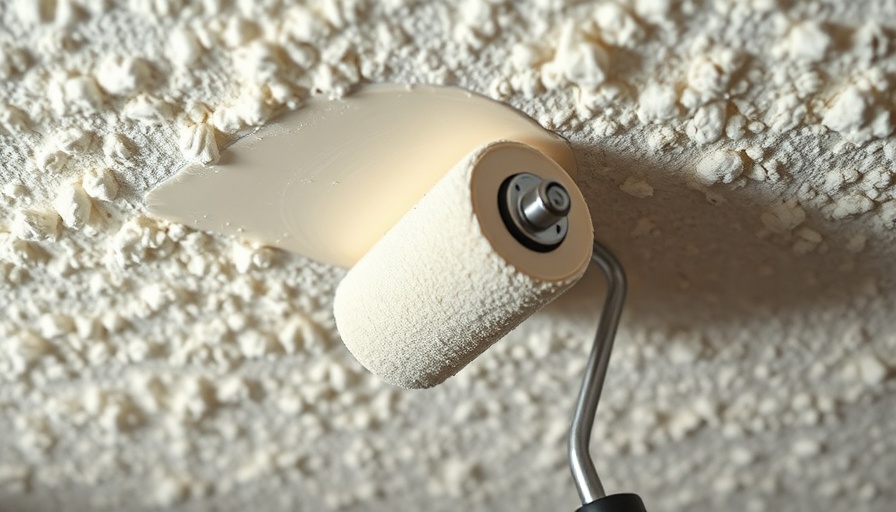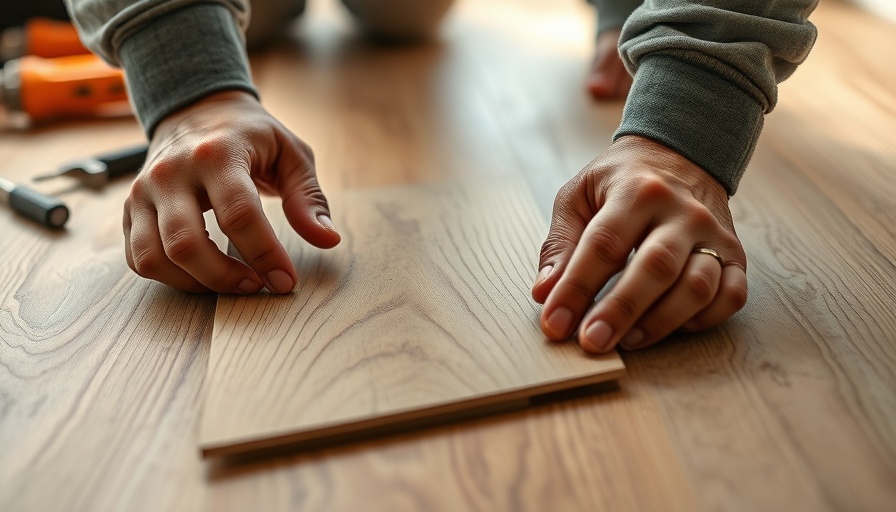
Revitalize Your Home: Paint Your Popcorn Ceiling Like a Pro
Your home is your sanctuary, and sometimes, good maintenance means taking a leap into DIY projects. One surprisingly impactful way to rejuvenate a space is by painting the often-overlooked popcorn ceiling. If you have textured ceilings lingering from the 1980s, you’re not alone. Many homeowners are rediscovering how to tackle this project with confidence and skill.
Understanding Popcorn Ceilings: History and Health
Known for their distinctive look, popcorn ceilings became a staple in homes during the mid-20th century, originally intended to aid in sound insulation while hiding imperfections. However, many ceilings put up before the 1990s may contain asbestos, a harmful material that poses serious health risks. If you suspect your ceiling is older, consider getting it tested before committing to a paint job. As a precaution, always wear safety gear such as masks and protective eyewear while working to avoid dust exposure.
The Essential Tools for Success
Before diving into your painting project, gather your supplies. You’ll need an angled paintbrush, a thick nap roller, painter’s tape, and paint designed specifically for ceilings. Having the right materials will significantly ease the painting process. Don't forget to protect belongings in your workspace with drop cloths to manage any potential splatters. Accurate preparation can make a lasting difference in your finished project.
Steps for Painting a Popcorn Ceiling Effectively
Start by masking off the edges of the ceiling with painter's tape to ensure clean lines. A clean surface is vital—a quick dusting with a vacuum or damp cloth will help the paint adhere better. When using the thick nap roller, you may find it helpful to load it fully for good coverage without excessive dripping. Divide the ceiling into sections to avoid missing spots. Take your time to ensure an even coat, which may require a second layer. Remember, the initial prep and patience can save you time in the end!
Future Considerations: Should You Paint or Remove?
Think long-term! Painting popcorn ceilings can add a fresh feel and transform the look of your room, but it will render future removal considerably more complex and costly. If you plan to keep your ceilings painted for a while, it’s a straightforward way to improve the aesthetics of your home without undergoing extensive renovations.
Additional Home Improvement Strategies
While you’re at it, consider other simple enhancements that can elevate your living space. Installing updated light fixtures or incorporating stylish ceiling fans can beautifully complement your newly painted popcorn ceiling. You might also explore adding crown molding or fresh wall colors that coordinate with your new ceiling palette.
The Eco-Friendly Way to DIY
For the environmentally conscious homeowner, opting for organic paints can enhance indoor air quality, making your DIY project not just beautiful but also sustainable. Check for low-VOC (volatile organic compounds) options to keep your living space healthy.
Transforming Your Space and Yourself
Embarking on a DIY project can genuinely boost your confidence and create a sense of accomplishment. Each brush stroke allows you to personalize your home while learning valuable skills. Whether you’re painting a ceiling, refreshing a room, or making minor renovations, the key lies in the preparation and execution. Don’t hesitate to dive in!
Get started on your popcorn ceiling project today! As you transform your space, consider documenting the process. Sharing your journey can inspire others who also seek to improve their homes.
 Add Row
Add Row  Add
Add 




Write A Comment